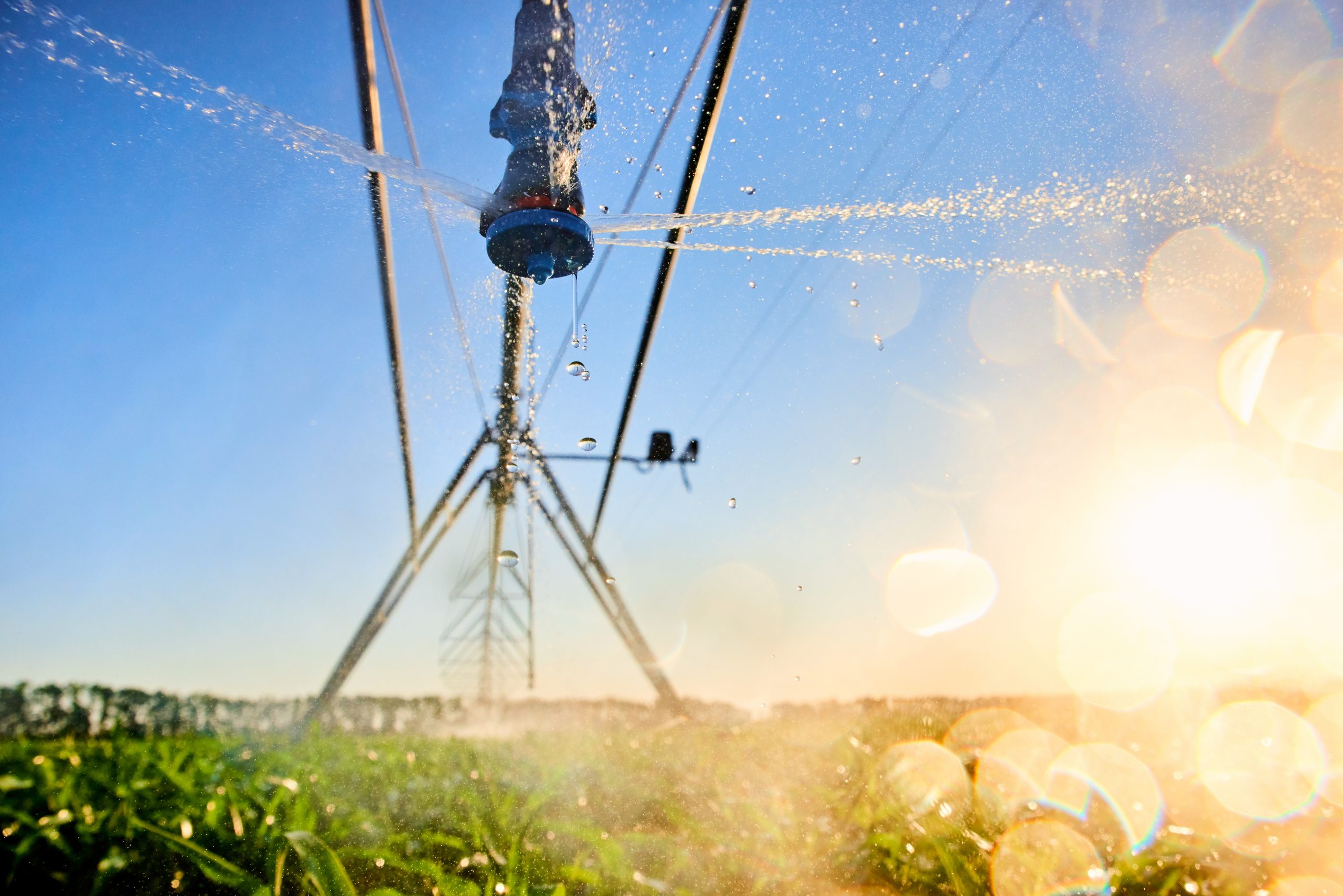Water is a vital natural resource essential for all living things on the planet. Water is one of the most important ingredients in the growth of something we need every day – food! It is also essential in the production of our clothing and the countless other products we use every day. Water grows our lives!
Farmers understand the significant role water plays in our lives, which is why they are working daily to conserve this precious resource. Effective conservation is the result of farmers implementing conservation plans, where all decisions on the farm are often based on water conservation. To help establish these plans, the Natural Resources Conservation Service is helping farmers by providing conservation solutions and technical support. While effective water conservation often entails a multifaceted approach, check out these five ways Texas farmers are conserving water on their farms.
1. Disturbing Soil Less
Kyla Hamilton and her husband Cole farm in Lubbock County where they grow corn, cotton and wheat in a rotation, as well as raise beef cattle. Hamilton said water is a precious resource that needs to be conserved and used where it matters most.
“Well, with everything, it’s not a one size fits all. It’s a collaboration of lots of things,” Hamilton said. “Most importantly, we are minimal till. We take great pride in that we leave the soil where it is and put it to work for us instead of disturbing it and disrupting it.”
By disturbing the soil less through minimal tillage, the Hamiltons are building up their farm’s soil armor. She said that by leaving all of the crop residue left after harvest on the ground instead of tilling it, the residue acts as a mulch that helps hold moisture in the ground. Not only does this practice help promote soil health, but it also helps ensure water is available for future crops.
2. Soil Moisture Probes
Steven Yoder and his family began farming in 1984 in Dallam County. The diversified operation grows a variety of crops with an emphasis on corn, wheat, milo and different varieties of hay. Yoder said water is their number one resource, and they take every action they can to conserve it, including implementing agricultural technologies.
“About everything we do is geared towards conserving water,” Yoder said, “but I tell you one of the newer innovations we’ve done in probably the last 10 years is we’ve used soil moisture probes to monitor the moisture in the ground at any given time during our growing season.”
This monitoring technology provides Yoder a better understanding of what’s going on beneath the surface. While Yoder depends on rainfall, irrigation is often necessary to ensure his crops receive adequate water for growth. Soil moisture probes help Yoder determine when and how much to irrigate his crops, which helps ensure water is being used efficiently.
3. Efficient Irrigation Systems
Brandt Underwood is an agronomist with the Natural Resources Conservation Service in Texas. Underwood has seen first-hand the conservation efforts of farmers and works directly with them to enhance their conservation practices. He said in conservation, it is important to make the best use of our resources. In times when irrigation is necessary, efficient irrigation systems are one component that can help farmers do just that.
“For example, a late model center pivot, where the drops are down in the crop canopy, and we have say a 95-96% application rate, that means 95% of that water we are putting in the soil profile,” Underwood said.
Conditions where soil is healthy combined with an efficient irrigation system allows for water to infiltrate deeply into the soil profile, making a greater amount of water available to the crop. Efficient irrigation systems help apply water precisely when and where it is needed, while helping reduce the amount of water lost to runoff.

4. Later Planting Dates
Jourdan Bell is a regional agronomist with Texas A&M AgriLife Extension in the Texas High Plains. In addition to helping farmers implement conservation-minded practices, research is another important aspect of Bell’s role in seeking additional ways farmers can save water.
“In our research, we have seen that shifting the planting date is actually something farmers can do to save water in the growing season,” Bell said.
Looking specifically at the crop water use for corn in the Texas High Plains, Bell said water use varies with the growth stage of the crop. Traditionally, corn is planted April to May in this region resulting in the critical period of development and period of greatest water use occurring in July, the hottest, driest time of year. By shifting the planting date to a later time, such as June, the critical period for growth and water use are shifted to August where temperatures are slightly lower and rainfall patterns may be more ideal.
“As we consider really trying to maximize the irrigation efficiency, planting date really becomes something that we might be able to utilize more to extend our water supply,” Bell said.
5. Rainwater Collection
Chris Pogue and his wife Theda ranch in Hopkins County where they raise bison, pigs, turkey and chickens. The Pogue’s also have a seasonal garden where they grow produce for direct-to-consumer markets in nearby urban areas, similar to a community-supported agriculture model. To provide for their water needs, the Pogue’s implemented a rainwater collection system.
“With us having our own rain catchment and having some of our landscape designed the way it is to actually contain the runoff water instead of it running off causing erosion. We use that [water] for livestock production or for irrigation,” Chris Pogue said.
To harness the potential of rainwater collection, they set up 55-gallon drums to collect rainwater off their home, as well as from their high tunnel. A high tunnel is an unheated greenhouse structure that provides environmental protection for their produce and extends the growing season. The Pogues said the use of a rainwater collection system provides another water source for their animals and produce, while reducing their reliance on municipal water sources.
These five water conservation methods are just a few examples of the ways farmers take action to conserve this invaluable resource. Farmers truly care about water and the other natural resources that make up our environment. That’s why they are doing their best to grow more with less, to ensure a viable water supply is available for future generations.
